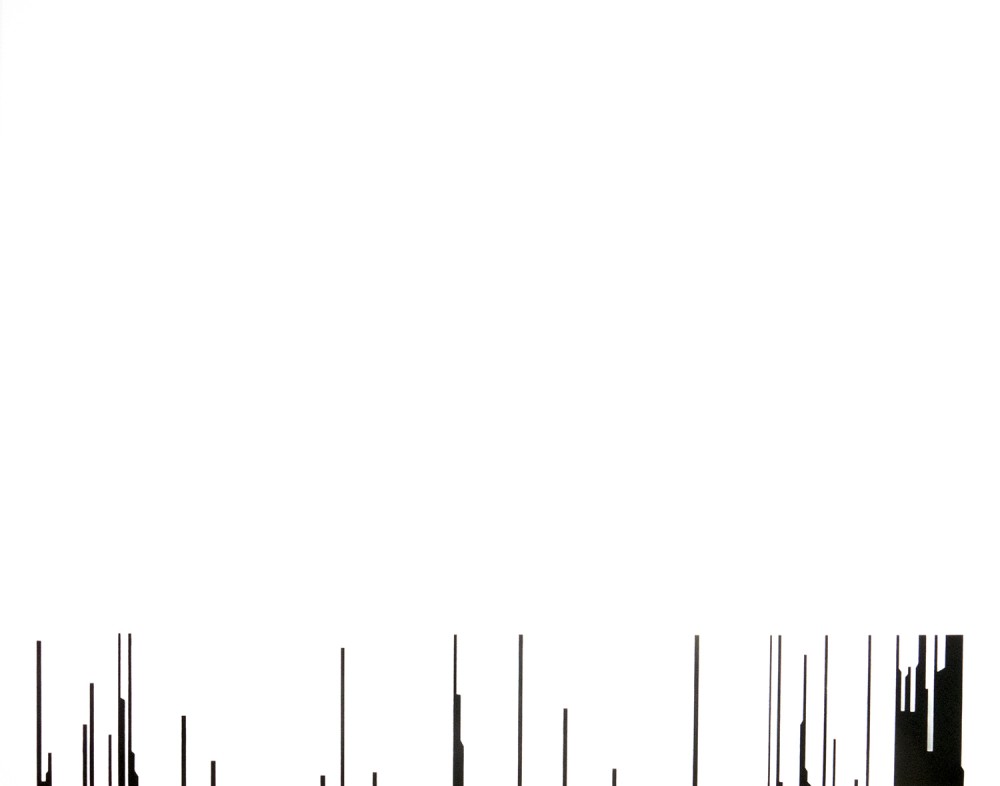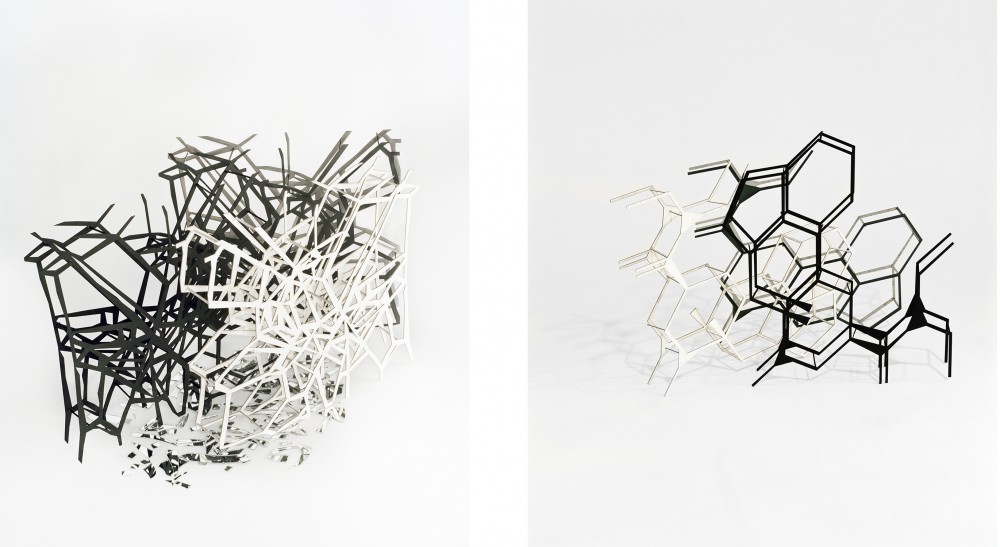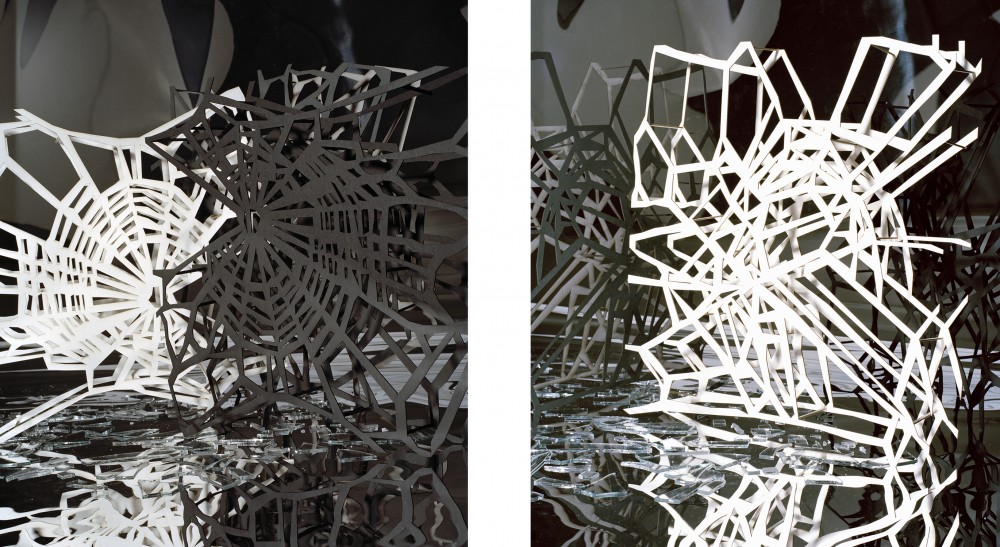Tell us about the work we featured in the ‘Temptation Issue’
Sleep Studies is a body of work I created following a jarring experience with sleep paralysis, a phenomenon that leaves you fully conscious and self-aware while sleeping but unable to move, speak, or open your eyes. The visual motifs of the series are derived from graphs recording various body functions and statistics during one night of sleep. Each chart can be interpreted as a different visual code, a language that translates the inner workings of my body into a series of lines, angles, and peaks.
Photograms serve as the primary medium, documenting yet reinterpreting the graphs of the sleep test. By honing in on a specific area of the graph and allowing light to bleed off the object, an abstraction of the original is created. Because photograms are in essence contact prints, they are unique objects (as opposed to a reproducible negative); they are as unique as the graphs from which they originate. In this way there is an appropriate correlation between the original object and the resulting art object.
Where do you see your work going? What is next in the development of your project?
While I have exhibited the sleep test equipment used as an art object, I’m eager to incorporate kinetic sculpture into the series. To me this is an opportunity to visually demonstrate the dichotomy between a still body and a working mind. This element of the project is in progress, and I’ve been collaborating with a programmer to create a piece using Arduino. I’d also like to explore the possibility of opening the sleep test to others and not just myself. I’d be curious to see how the graphs differ from one person to another, and how the inner workings of different people can be simplified to such sparse linear forms. There’s vast potential working in the darkroom with non-camera processes, and I’m excited to continue experimenting with this method of working and see how it evolves over time.
What inspires you?
As I’ve honed in on my photographic interests I’ve become increasingly aware that I’m inspired by my family’s medical background; both of my parents are doctors, and for years I thought I would follow their lead. Growing up I used to skim the piles of textbooks in our basement and admire their illustrations. As a child I remember having a model of the human brain in my study that could be broken apart into smaller pieces, and a miniature model of pressure points for acupuncture. None of these forms triggered much thought from me at the time, but in hindsight I understand their importance in my work and my methodologies.
How do you relate the theme of 'Temptation' to your work? What does temptation mean to you?
To me, temptation is the nagging desire for something seemingly unattainable, just out of reach, or maybe something that is accessible but shouldn't be. Temptation consumes you, leaving you with little capacity to think of much else; it has the potential to leave you reeling, unsure of how you got to where you are. My work analyzes temptation with a scientific voice; while I decided Sleep Studies would be a series dominated by data motifs, its origins stem from a moment where my body failed to act as expected, and in turn forced me to think about the act of sleeping. Sleep requires the trust that one will wake up again, and in that way is an act of submission. Sleep also provides the space for the mind to wander and to be unrestrained by outside influences, in other words a chance to submit to temptation.

Mina Pekovic Mapping Series:
Mapping is a series that explores the visual representation of various drugs and the reactions they produce both in human and non-human forms. The series is composed of three motifs, each characterizing substances in different manners. These visual forms are materialized through the use of sculpture; each image is composed of multiple sculptures of the same forms, thus creating an optically complex scene. Additionally, elements such as gels and mirrors are utilized to further puzzle the eye. The use of photography in the series is meant to enhance the layering and elaborate nature of the work. While the sculptures are separate entities in themselves, representing them through photography simultaneously flattens the forms and adds layers by incorporating elements such as shadows, reflections, etc. Regarding the motifs used, the chemical compound of LSD is employed, while other sculptures are inspired by the web patterns made by spiders under the influence of drugs. Finally, a third pattern is created from the PET scans of a normal brain and one following heavy use of cocaine.
By manifesting abstract forms through photography and sculpture, Mapping attempts to examine the phenomenon of drug stimulation while testing the limits of the photographic medium as a means of material expression. The work inextricably reveals and further obscures the composition of these drug-related structures, thus encouraging the viewer to contemplate the phenomenon through a different lens.



